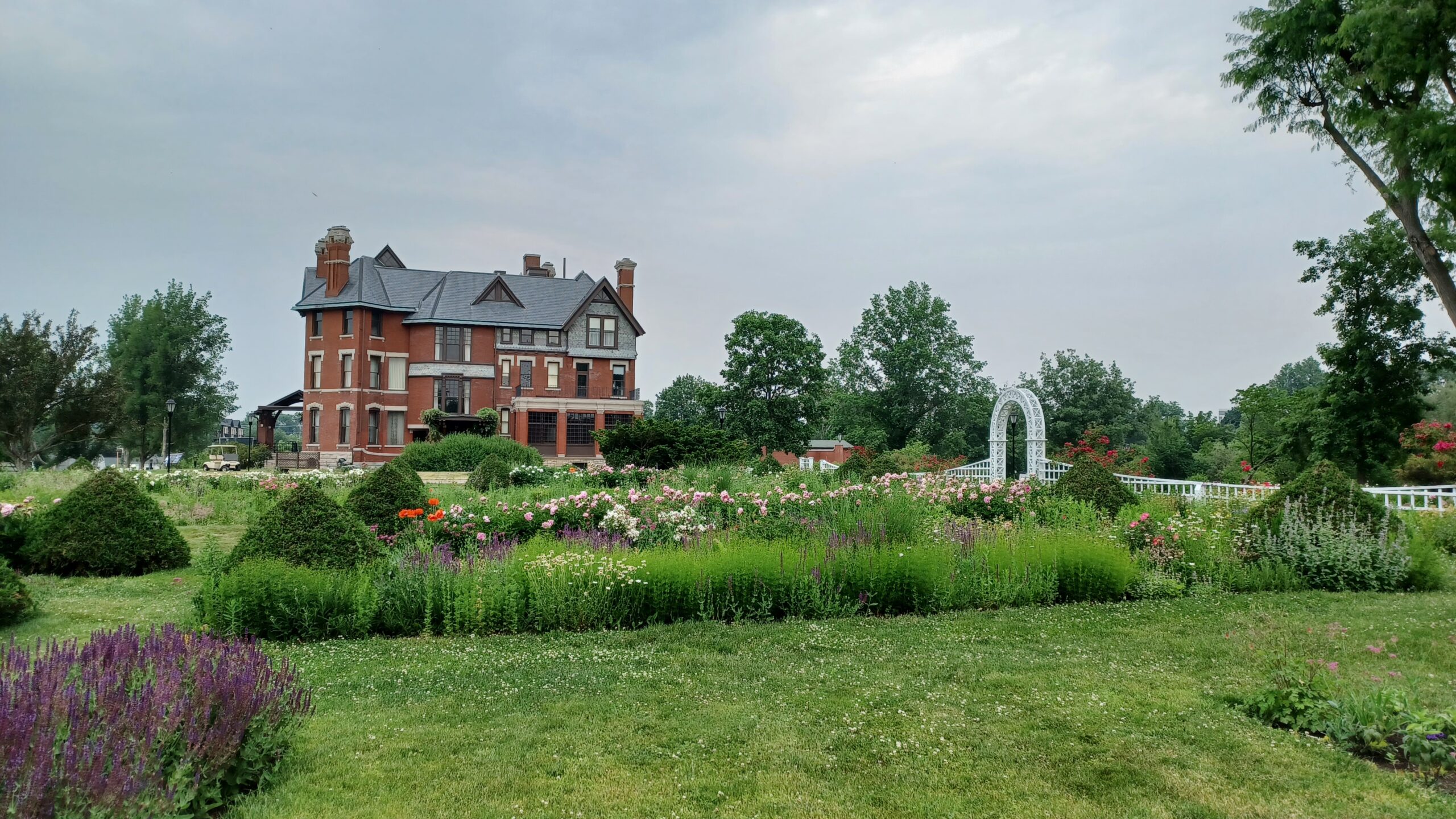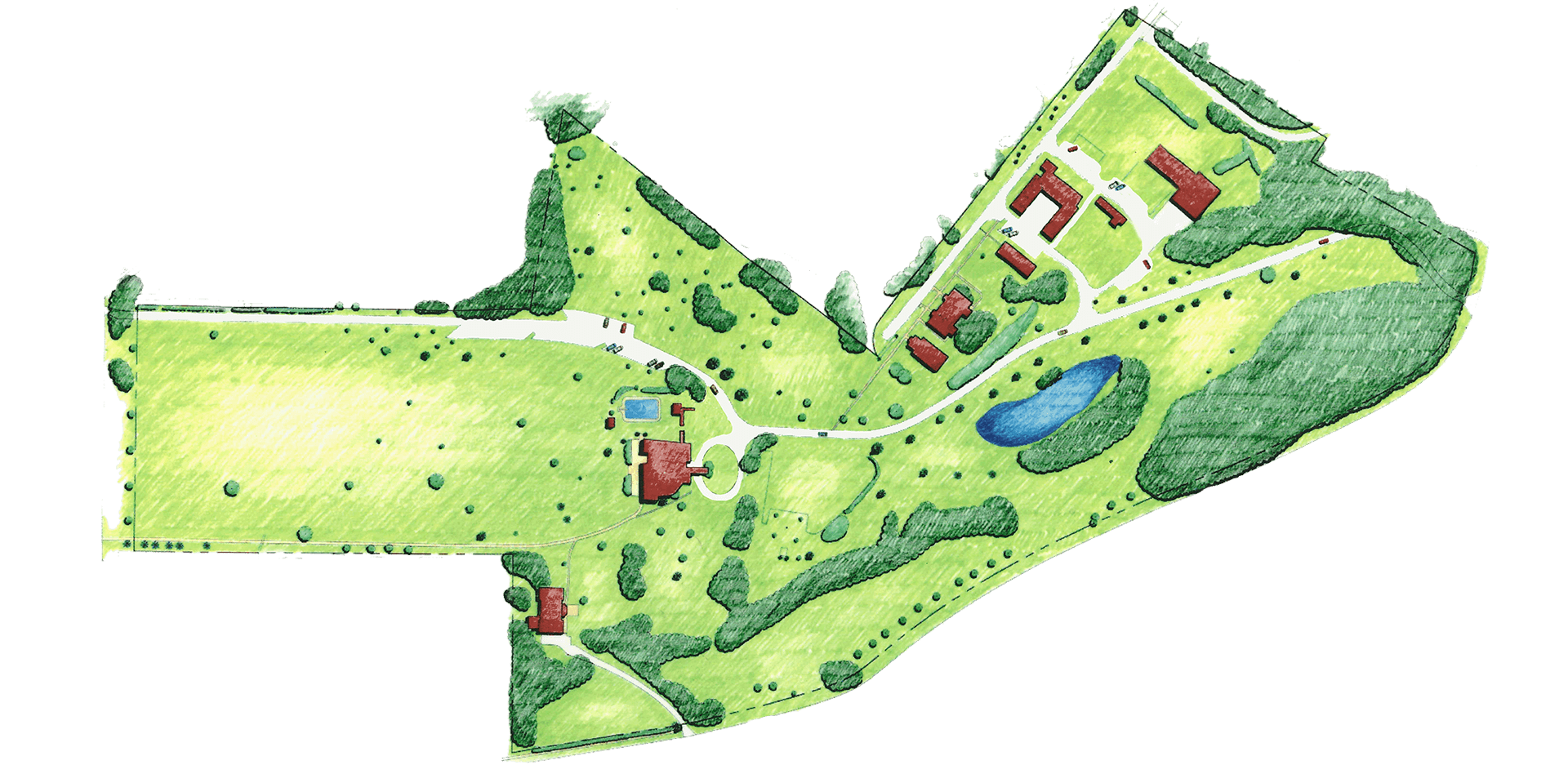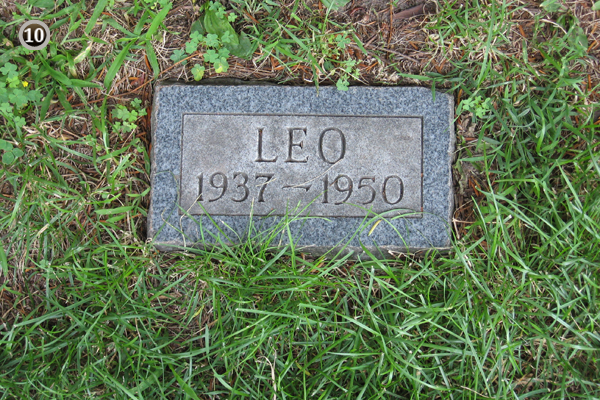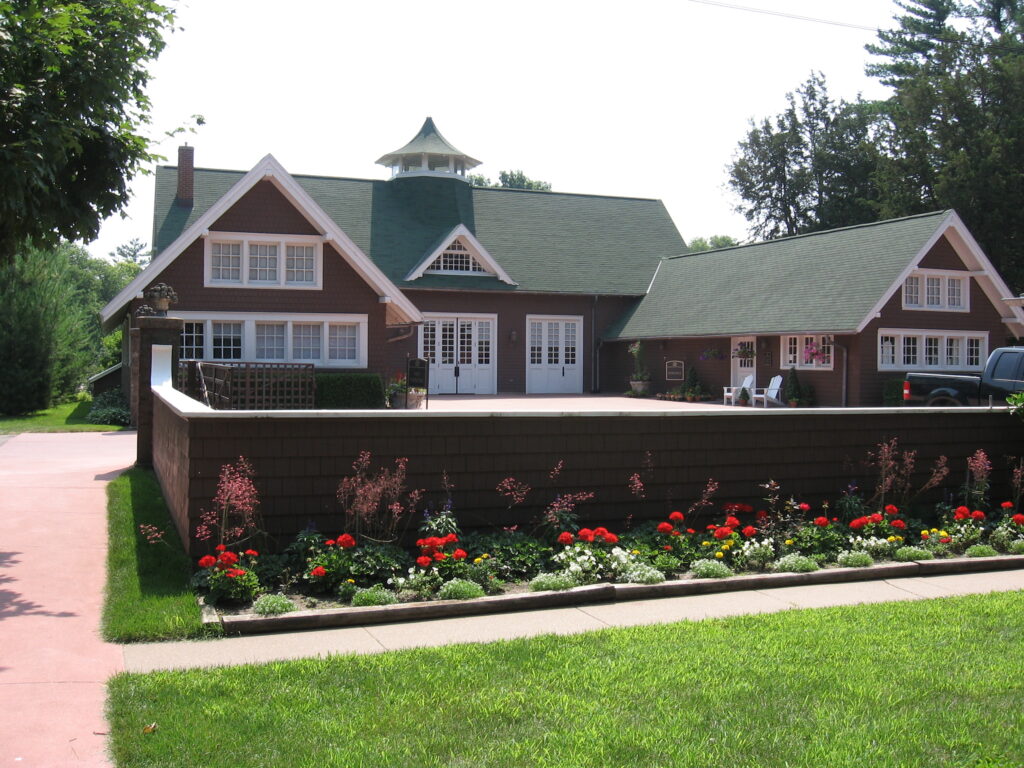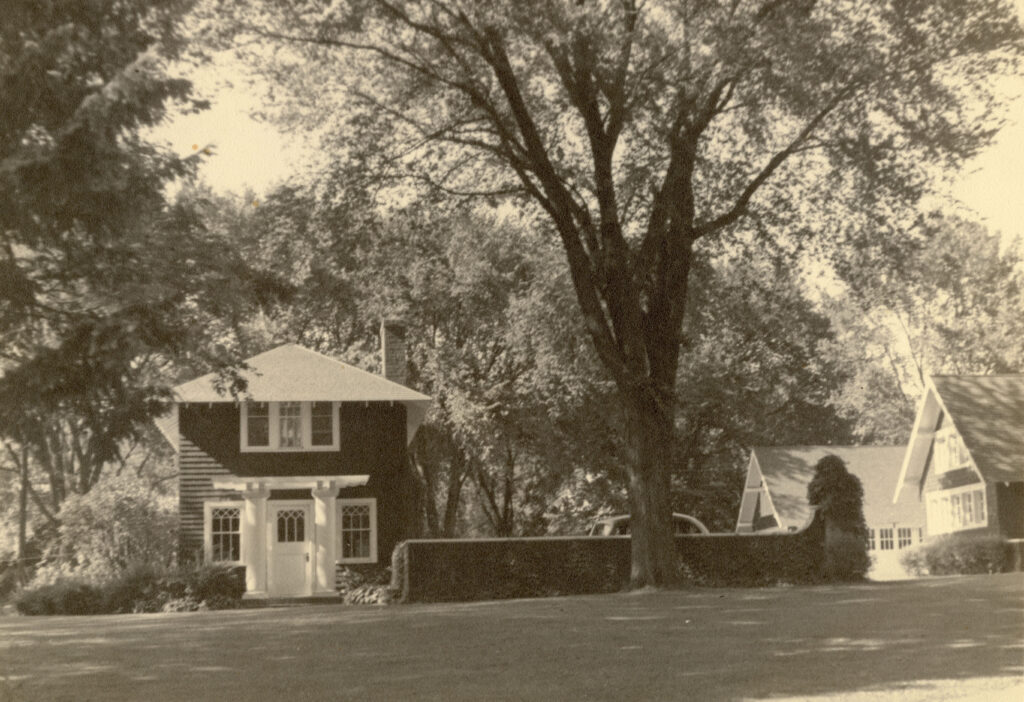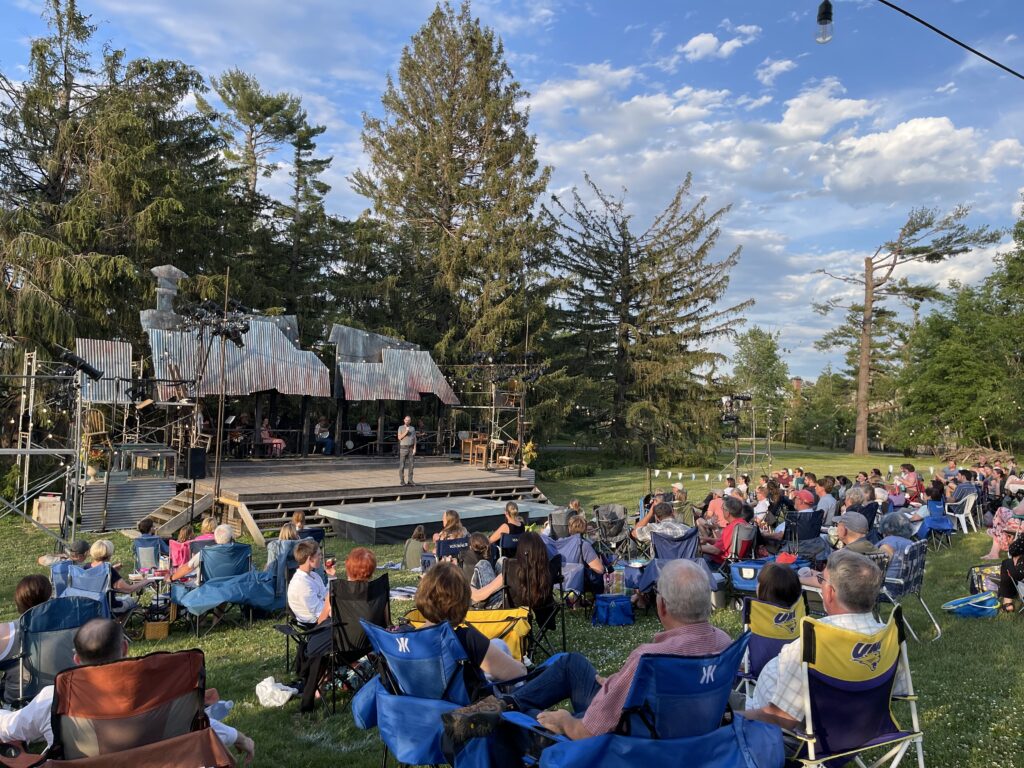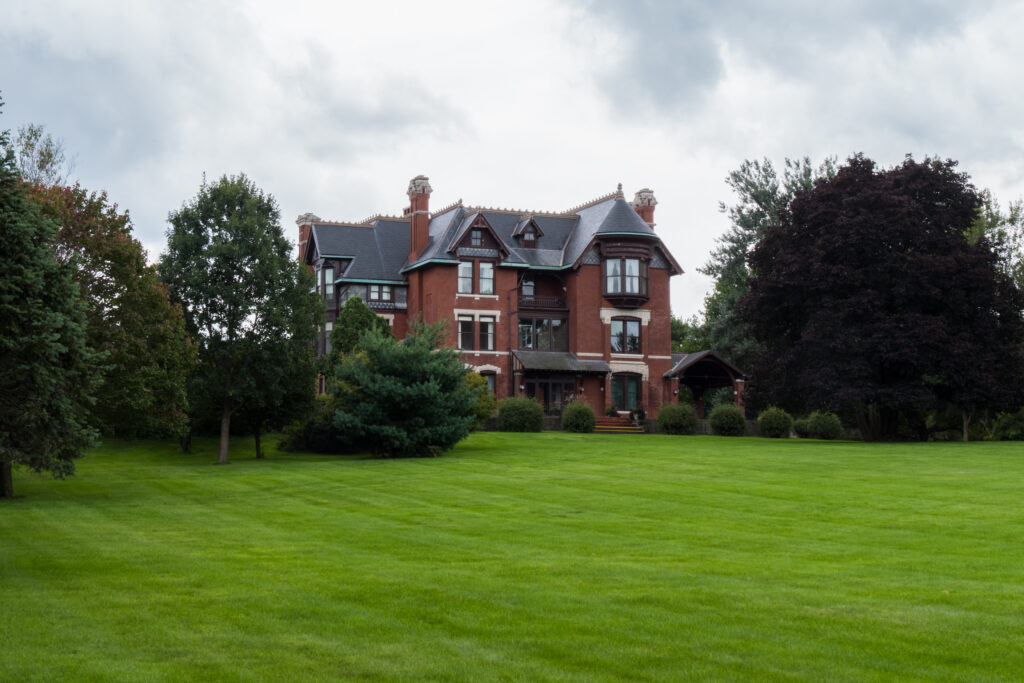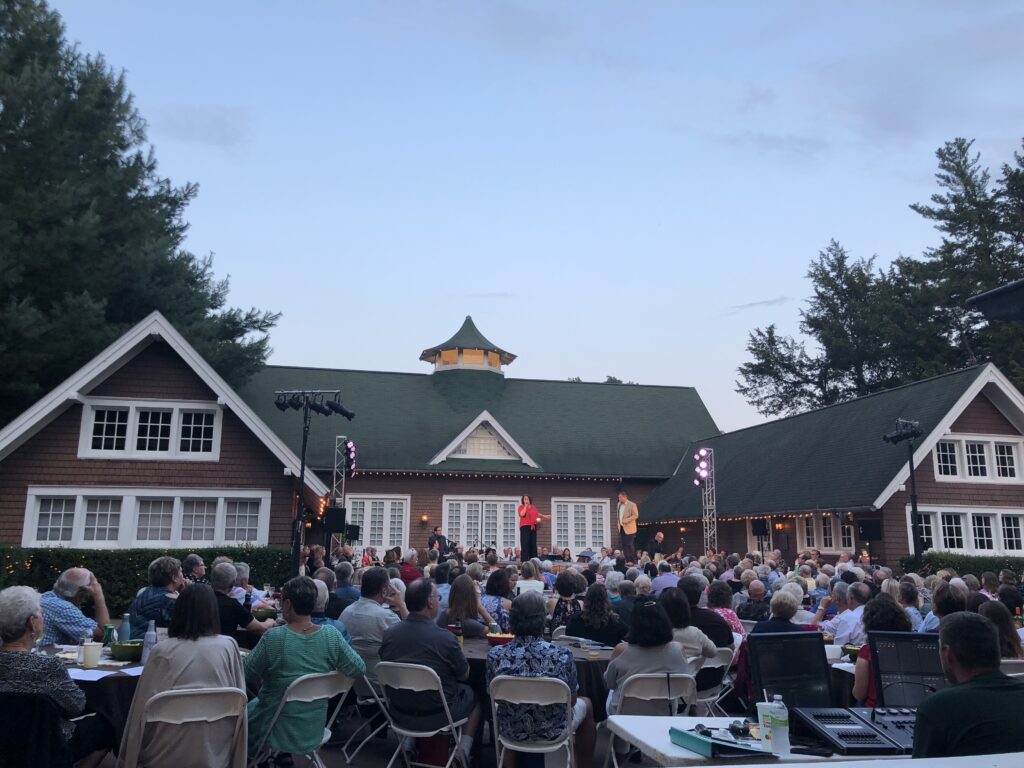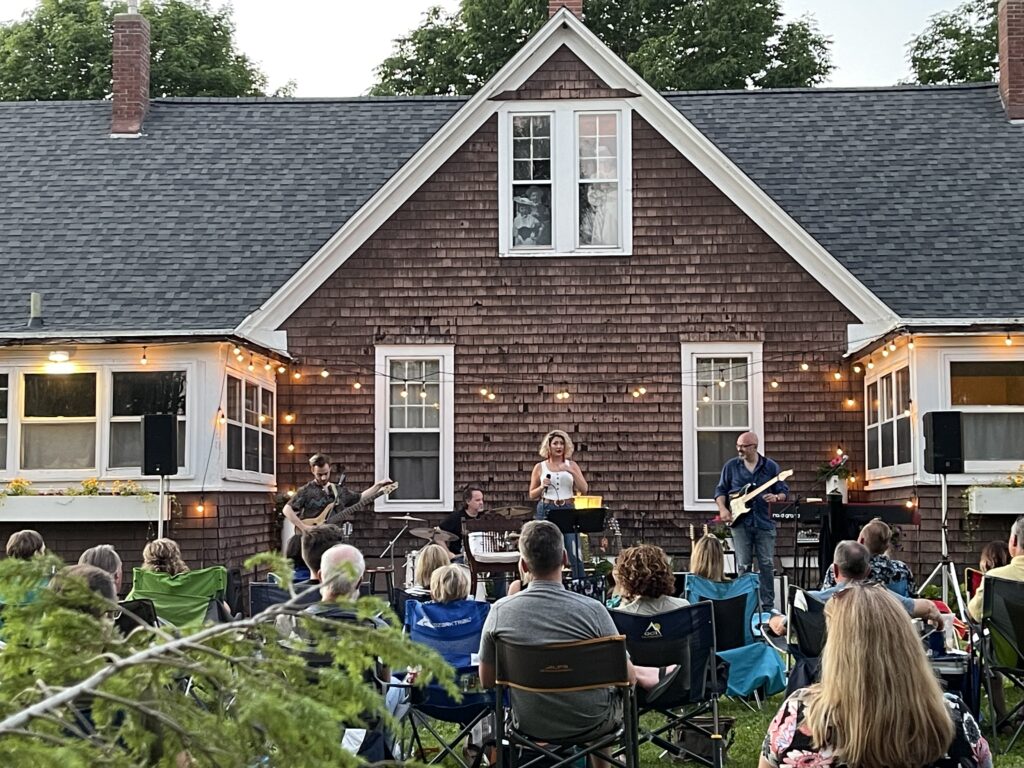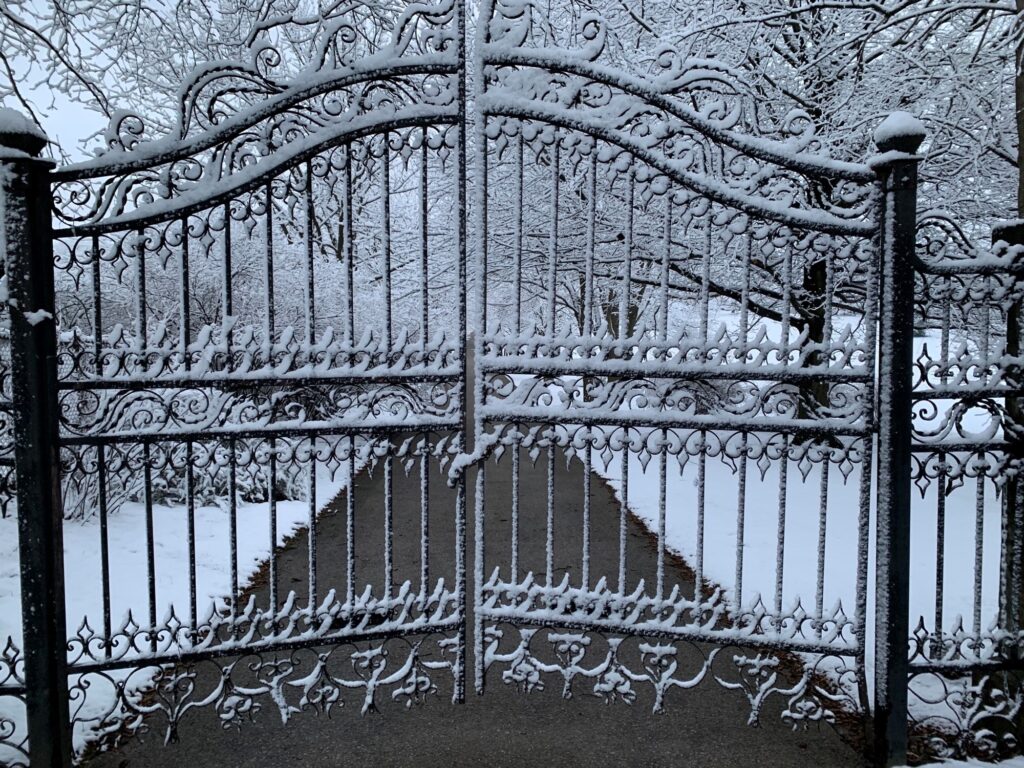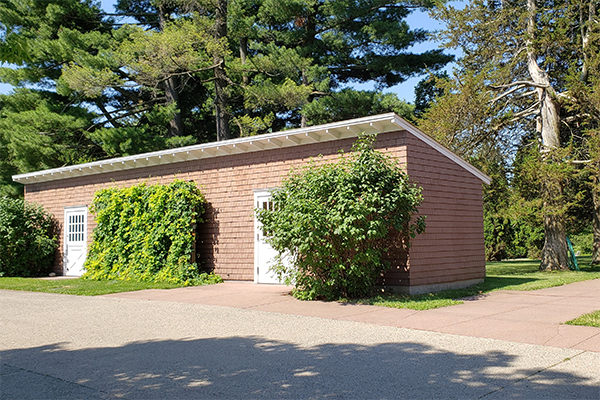Brucemore’s 26 acres of beautiful historic landscape are free to visit and open year-round.
Come explore anytime the gates are open!
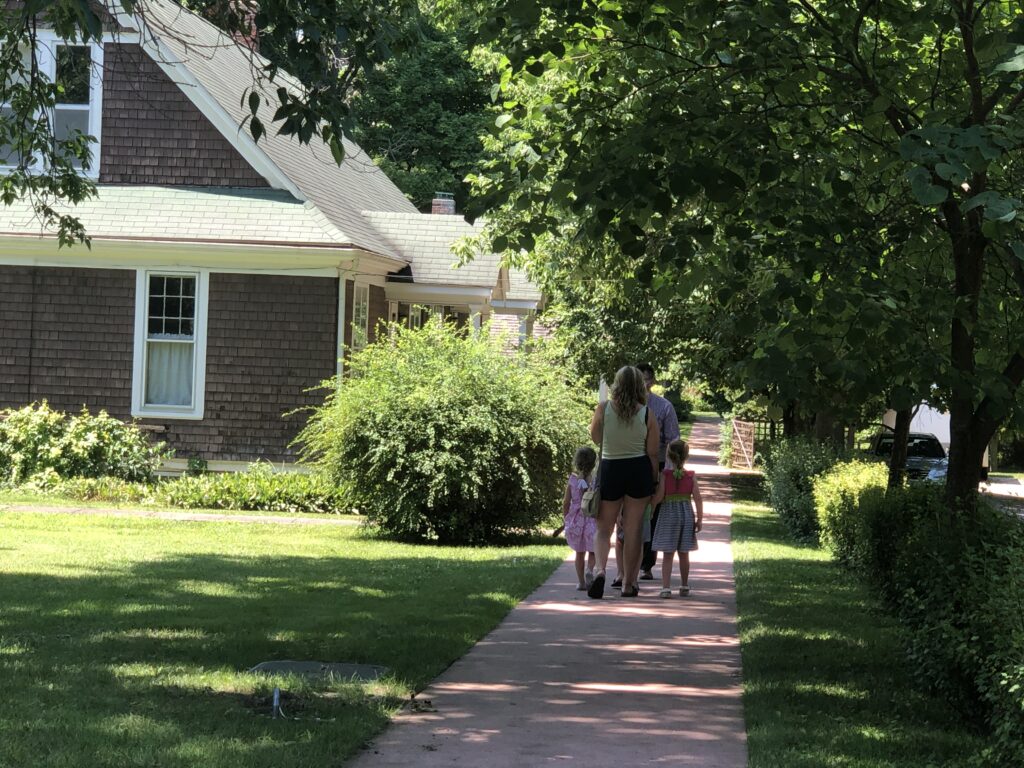
Upcoming Grounds Hours
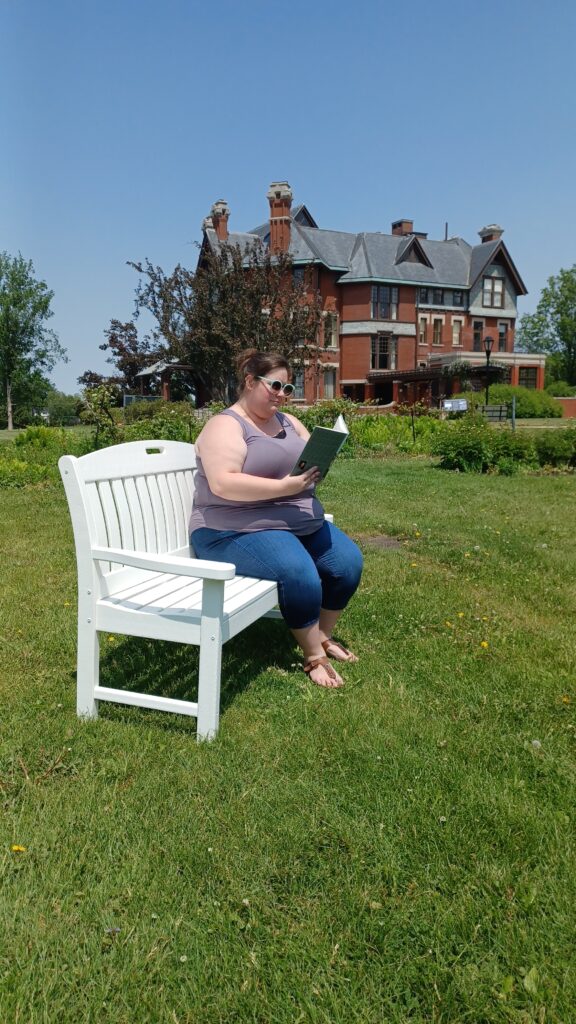
Visitor Guidelines for the Grounds
Help us keep Brucemore beautiful and welcoming for every guest!
- Pets are welcome outdoors, but please keep them on lead and pick-up any waste.
- Professional photography is not allowed without permission from Brucemore. Please see our photography policy for more information.
- Help us keep the site clean by taking any trash with you when you leave.
- Enjoy the view by parking vehicles in paved spaces near the carriage house or mansion.
- Public restrooms are available in a building near the carriage house seasonally. Restrooms are also available inside the mansion for tour guests.
- You are welcome to use outdoor furniture. Two picnic tables are available in the orchard, a bench is available near the formal garden, and pairs of Adirondack chairs are located in various places across the estate.
Estate Map
Explore the map to learn more about various locations of buildings, landscape features, and visitor amenities.
Please use Google Maps for a mobile-friendly version.
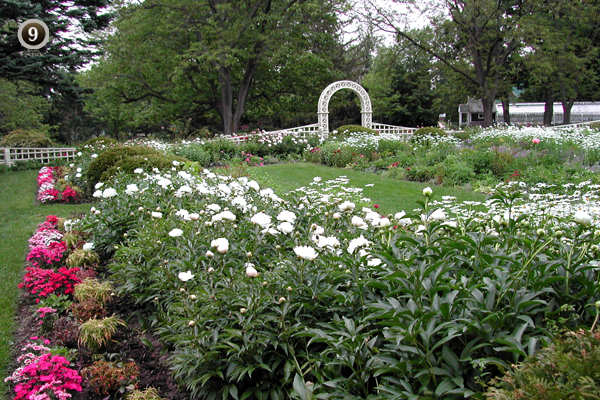
Designed in 1910, this garden features four geometric beds with a natural array of plantings. The garden was enclosed by walls to avoid competing with any other element in the landscape.
The four walls consisted of the grape arbor to the north, a tall rustic fence adorned with vines and shrubs along the south and east, and a brick terrace furnished with a concrete bench facing the garden to the west.
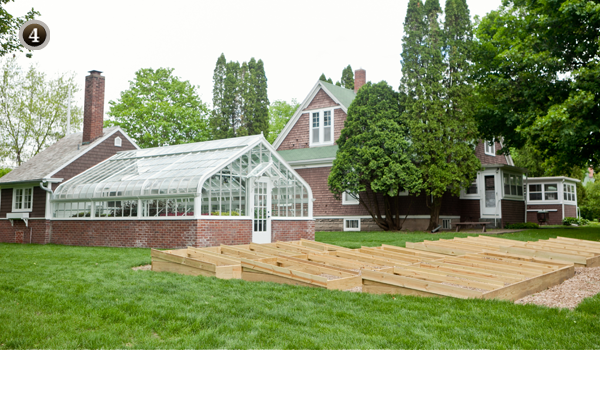
Called the Servants’ Village, these buildings comprised the working side of the estate. The Douglases added a residential duplex in 1909 to provide housing for staff with families. Next door, the 1915 Lord & Burnham Greenhouse housed bedding plants for the garden and provided fresh flowers for the mansion during the winter.
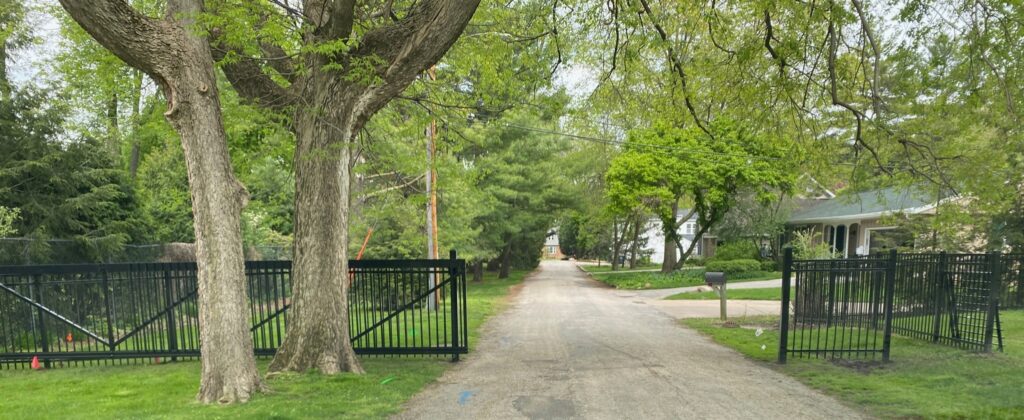
The Hall family decreased the size of the property to 26-acres by selling off a portion of the estate. The residences near the Dows Lane entrance were once part of Brucemore.
Dows Lane is a city street that ends on Brucemore property today. Buses and oversized commercial vehicles enter this way to ensure enough overhead and side clearance.
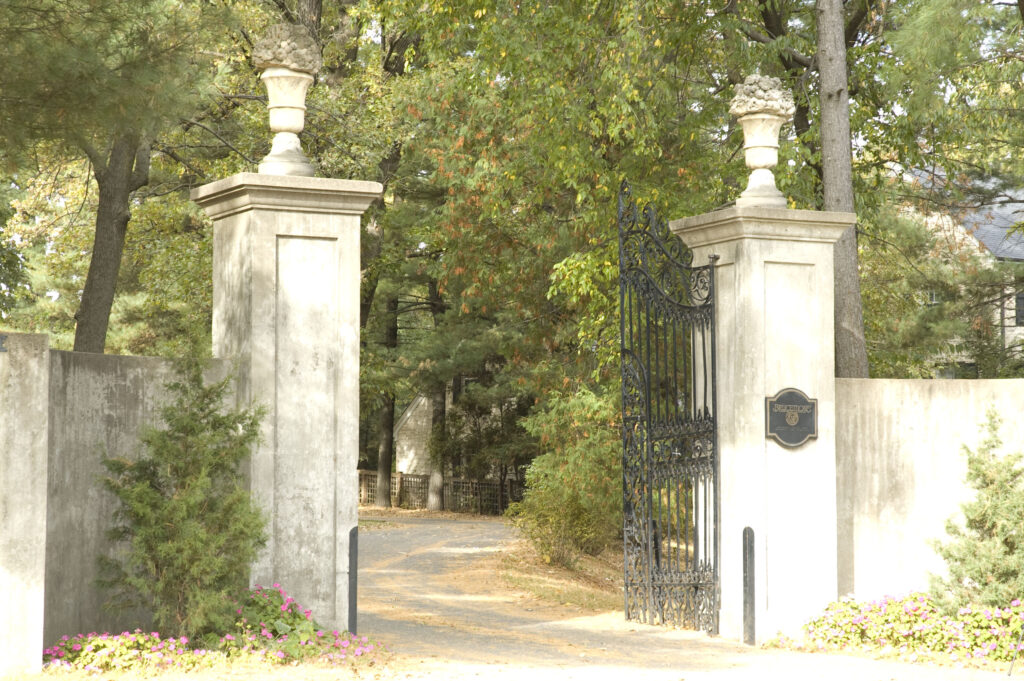
In 1907, the Douglases moved the entrance of the estate from First Avenue to Linden Drive. The Douglases had gates shipped from California and installed in 1928. The “Bowl of Plenty” on top of the pillars is a symbol of hospitality and can be found throughout the estate.
